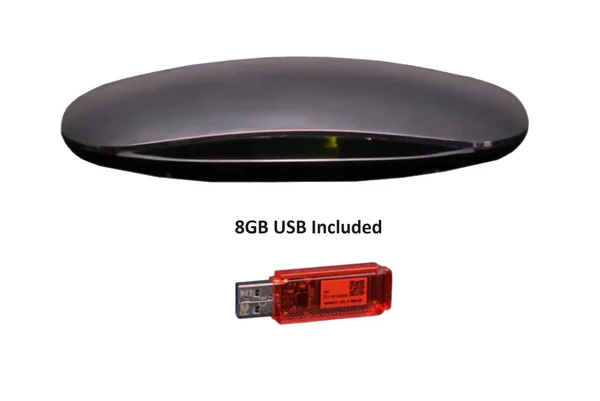I. Introduction
A. Definition of ISO 17025 Certification
ISO 17025 certification is an international standard that specifies the general requirements for the competence of testing and calibration laboratories. It encompasses quality management system requirements, technical competence, and the ability to produce precise and accurate test and calibration data. Laboratories accredited to ISO 17025 demonstrate their commitment to quality, reliability, and compliance with global best practices in laboratory operations.
B. Importance of Accreditation for Testing and Calibration Laboratories
Accreditation to ISO 17025 is crucial for testing and calibration laboratories to ensure the accuracy and reliability of their results. It provides assurance to customers, regulatory authorities, and other stakeholders that the laboratory operates competently and generates valid results. ISO 17025 accreditation enhances credibility, facilitates acceptance of test reports and calibration certificates internationally, and supports compliance with regulatory requirements, thereby fostering trust and confidence in laboratory services.
II. What is ISO 17025?
A. Overview of ISO 17025 Standard
ISO 17025 sets out the requirements for testing and calibration laboratories to demonstrate competency, impartiality, and consistent operation. It includes requirements for quality management systems, personnel, equipment, testing/calibration methods, sampling, and result reporting. The standard ensures laboratories operate under stringent quality assurance protocols to produce reliable and accurate test results and calibration data.
B. Core Principles and Requirements
The core principles of ISO 17025 include maintaining a quality management system, technical competence of personnel, calibration and testing proficiency of equipment, and ensuring traceability of measurements to international standards. It emphasizes impartiality and confidentiality, ensuring laboratories conduct activities impartially and manage confidential information appropriately.
C. Scope and Applicability in Laboratory Settings
ISO 17025 applies to all laboratories performing testing or calibration, regardless of size or the scope of their services. It is used by laboratories in various sectors including manufacturing, healthcare, environmental science, and research. Compliance with ISO 17025 enables laboratories to demonstrate technical competence, enhancing their credibility and ability to provide reliable and accurate testing and calibration services globally.
III. History and Development
A. Origins of ISO 17025
ISO 17025 originated from the need to standardize the competence of testing and calibration laboratories globally. It evolved from national and international standards, merging principles from previous standards into a unified framework. The standardization aimed to improve consistency and reliability in laboratory testing and calibration practices worldwide.
B. Key Milestones in ISO 17025 Development
Key milestones include its initial publication in 1999, followed by revisions in 2005 and 2017. Each revision addressed advancements in technology, changes in regulatory requirements, and feedback from laboratory stakeholders. Updates focused on enhancing flexibility, improving clarity in requirements, and ensuring alignment with other international standards to maintain relevance and applicability.
C. Impact of Revisions on Laboratory Practices
Revisions to ISO 17025 have influenced laboratory practices by introducing updated methodologies, improved risk-based thinking, and enhanced focus on impartiality and traceability. Laboratories have adapted by implementing more robust quality management systems, enhancing technical capabilities, and aligning with updated requirements to maintain accreditation and meet evolving customer and regulatory expectations.
IV. Core Requirements of ISO 17025
A. Management Requirements
ISO 17025 requires laboratories to establish and maintain a quality management system (QMS) that encompasses organizational structure, responsibilities, procedures, processes, and resources needed to implement quality policies and achieve laboratory objectives. This includes document control, corrective actions, internal audits, and management reviews to ensure continual improvement and compliance with the standard’s requirements.
B. Technical Requirements
Technical requirements under ISO 17025 cover the competence of personnel, calibration and testing methods, equipment suitability and calibration, measurement traceability, handling of test and calibration items, and ensuring validity of results. Laboratories must validate methods, maintain equipment, and ensure traceability of measurements to national or international standards to provide accurate and reliable testing and calibration services.
C. Personnel Competence and Training
ISO 17025 mandates that laboratory personnel possess the necessary education, training, technical knowledge, and experience to perform their assigned tasks competently. Training programs ensure personnel are proficient in laboratory procedures, equipment operation, method validation, and quality assurance practices. Competence is regularly assessed to verify proficiency, and ongoing training ensures personnel remain updated on advancements in their field and regulatory changes.
V. Benefits of ISO 17025 Certification

A. Improved Quality and Reliability of Test Results
ISO 17025 certification enhances the quality and reliability of test results and calibration data through rigorous adherence to standardized procedures and quality management practices. This ensures accuracy, precision, and repeatability in laboratory testing and calibration, fostering confidence among stakeholders in the reliability of reported results.
B. Enhanced Market Recognition and Competitiveness
Certification to ISO 17025 enhances a laboratory’s market recognition and competitiveness by demonstrating technical competence, impartiality, and adherence to international standards. Accredited laboratories are recognized globally for their ability to produce reliable test reports and calibration certificates, thereby attracting more clients and expanding market opportunities.
C. Compliance with Regulatory Requirements
ISO 17025 certification ensures laboratories comply with regulatory requirements and standards applicable to their testing and calibration activities. Accredited laboratories demonstrate conformity to industry-specific regulations and customer requirements, facilitating acceptance of test results and calibration certificates across different jurisdictions and regulatory frameworks. Compliance with ISO 17025 helps laboratories mitigate risks associated with non-compliance and maintain operational integrity.
VI. The Certification Process
A. Steps to Achieve ISO 17025 Certification
- Gap Analysis and Readiness Assessment Conduct a thorough evaluation of current practices against ISO 17025 requirements to identify gaps. This assessment helps determine necessary actions and resources required for compliance.
- Documentation and Implementation of QMS Develop and implement a Quality Management System (QMS) that aligns with ISO 17025 standards. This includes documenting procedures, work instructions, and policies to ensure consistent operations.
- Internal Audits and Management Review Conduct internal audits to assess QMS effectiveness and compliance. Management reviews evaluate overall system performance, resource allocation, and strategic alignment with ISO 17025 requirements.
- Accreditation Assessment and Decision Undergo an assessment by an accredited body to verify compliance with ISO 17025. Upon successful evaluation, the accreditation body grants certification, affirming the laboratory’s competence and compliance with international standards.
B. Challenges in Implementation
Common Challenges Faced by Laboratories
Laboratories often encounter challenges such as inadequate resources, complex documentation requirements, resistance to change among staff, and difficulty in aligning current practices with ISO 17025 standards. Addressing these challenges requires proactive planning, resource allocation, and stakeholder engagement to ensure smooth implementation.
Strategies for Overcoming Implementation Barriers
To overcome implementation barriers, laboratories can implement strategies like conducting comprehensive training programs, establishing clear communication channels, involving staff in the process, and leveraging external expertise when needed. Adopting a phased approach, setting realistic timelines, and fostering a culture of continuous improvement can facilitate successful implementation and achieve ISO 17025 certification effectively.
VIII. Conclusion
A. Summary of Key Points
In summary, ISO 17025 certification is pivotal for testing and calibration laboratories to demonstrate competence, reliability, and adherence to international standards. It ensures the quality and accuracy of test results and calibration data, enhancing credibility and trust among stakeholders.
B. Importance of Continuous Improvement and Compliance
Continuous improvement and compliance with ISO 17025 are essential to maintaining accreditation. Laboratories must regularly review and enhance their quality management systems, update procedures, and stay abreast of technological advancements and regulatory changes to sustain operational excellence.
C. Call to Action for Laboratories Pursuing ISO 17025 Certification
Laboratories aspiring for ISO 17025 certification should initiate a gap analysis, develop a roadmap for implementation, and allocate resources accordingly. Engaging stakeholders, fostering a culture of quality and compliance, and seeking accreditation from recognized bodies are crucial steps towards achieving and maintaining ISO 17025 certification. Embracing these practices ensures laboratories meet global standards and remain competitive in the industry.




